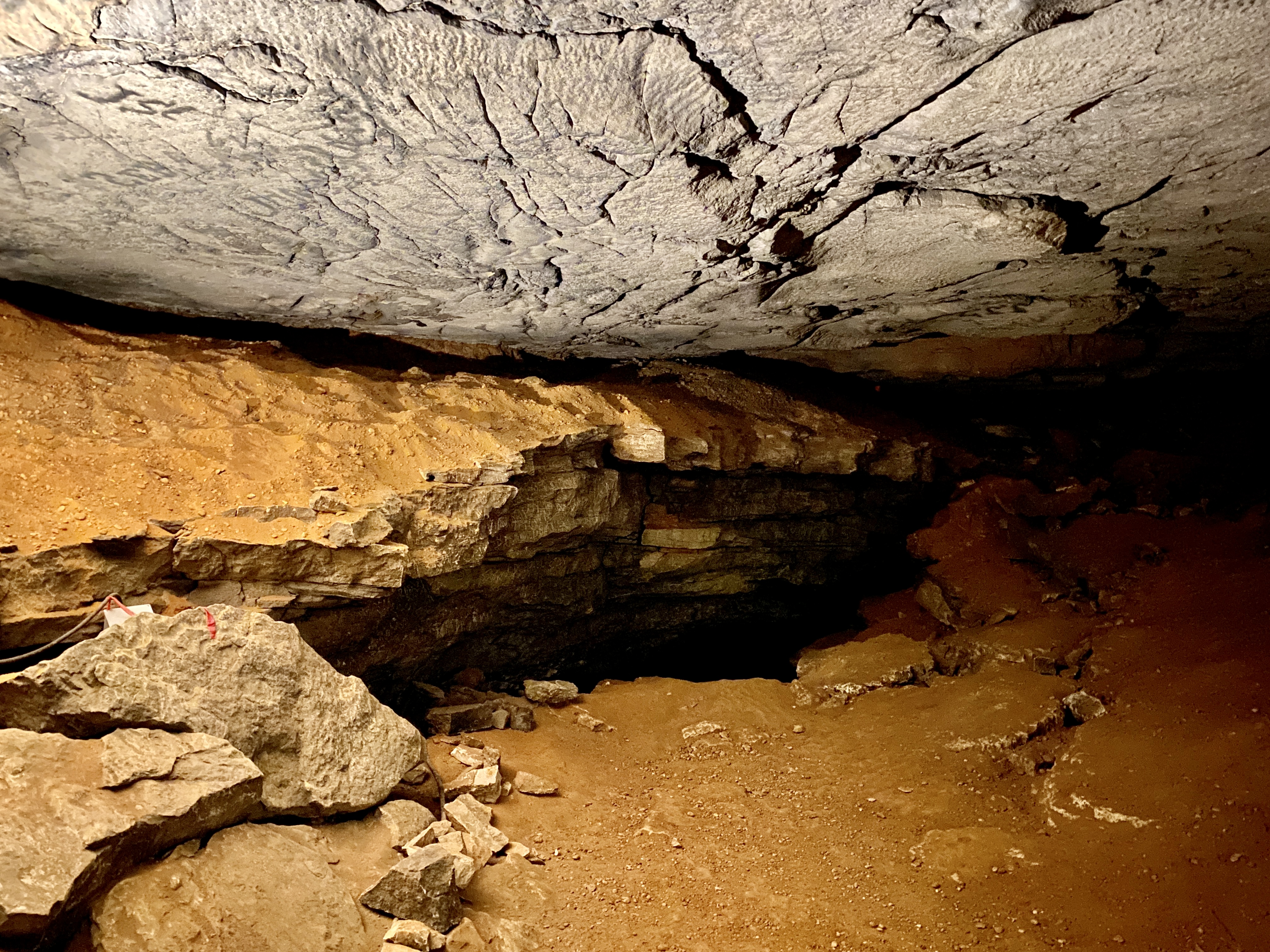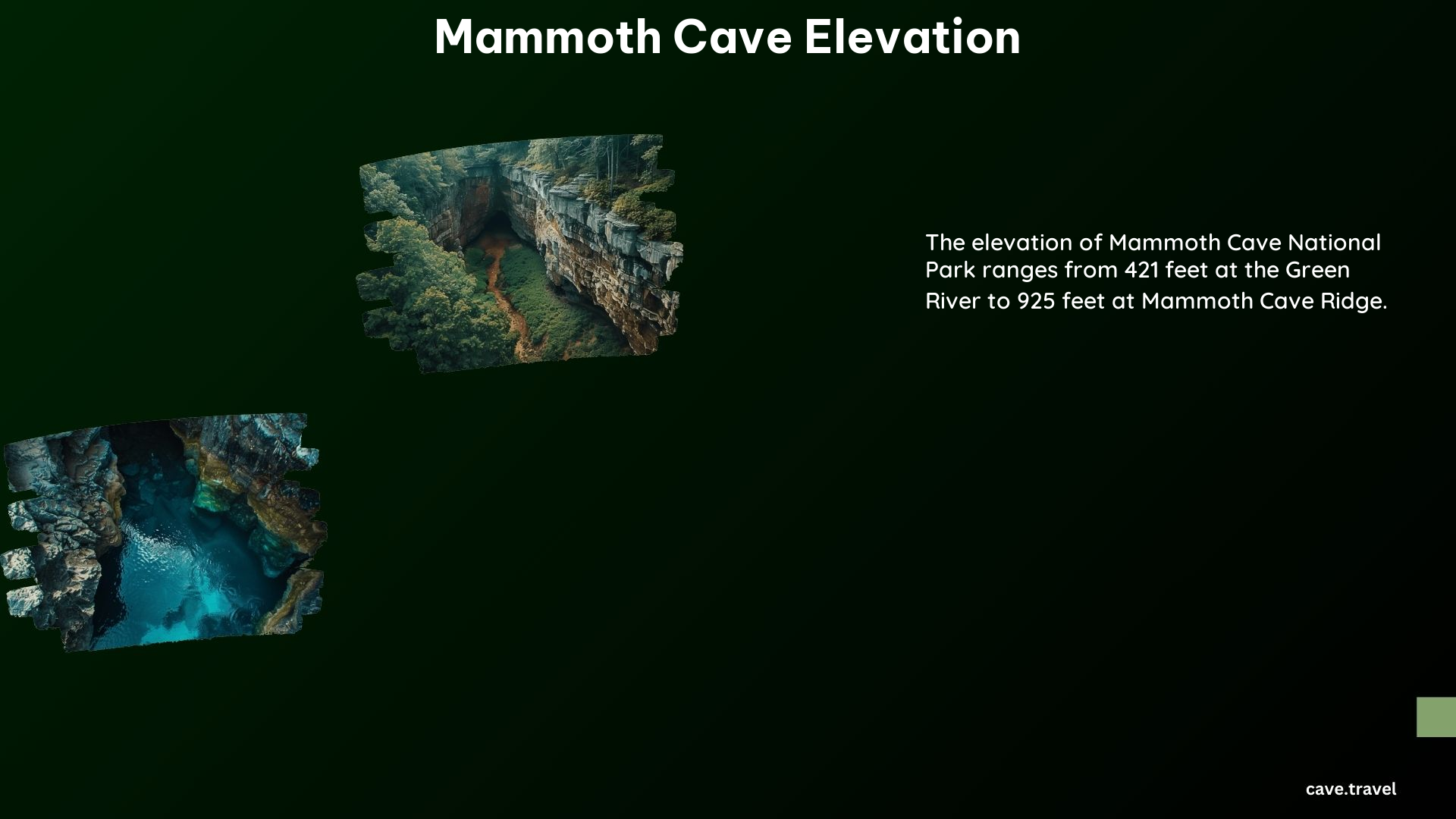Mammoth Cave National Park, located in central Kentucky, is a vast and diverse area with varying elevations. From the lowest surface elevation near the Green River to the highest point at Mammoth Cave Ridge, the park’s terrain offers a unique and captivating landscape for visitors and explorers.
The Lowest Surface Elevation: 411 Feet (125 Meters)

The lowest surface elevation in Mammoth Cave National Park is found near the Green River, specifically near the town of Brownsville. This area, situated at an elevation of 411 feet (125 meters), provides a glimpse into the park’s intricate and dynamic geological history.
The Highest Surface Elevation: 925 Feet (282 Meters)

The highest surface elevation in Mammoth Cave National Park is located at Mammoth Cave Ridge, reaching an impressive 925 feet (282 meters) above sea level. This prominent feature offers breathtaking views and a glimpse into the park’s diverse topography.
Notable Elevations within the Park
In addition to the lowest and highest surface elevations, Mammoth Cave National Park is home to several other notable elevations:
| Elevation | Location |
|---|---|
| 853 feet (260 meters) | Brooks Knob, the highest and most prominent mountain within the park |
| 671 feet to 910 feet (205 meters to 277 meters) | The general elevation range around Mammoth Cave National Park |
These varying elevations contribute to the park’s diverse landscape, which includes not only the famous Mammoth Cave system but also a variety of surface features such as hills, valleys, and rivers.
The Importance of Elevation in Mammoth Cave National Park
The diverse elevations found within Mammoth Cave National Park play a crucial role in shaping the park’s unique ecosystem and geological features. The differences in elevation influence factors such as temperature, precipitation, and vegetation, creating a diverse and dynamic environment.
Microclimate and Vegetation
The varying elevations in the park contribute to the formation of distinct microclimates, which in turn support a diverse array of plant and animal life. Higher elevations tend to be cooler and drier, while lower elevations are generally warmer and more humid. This variation in climate allows for a wide range of plant species to thrive, from the lush, verdant forests at lower elevations to the more sparse, hardy vegetation found at higher elevations.
Geological Formations
The park’s diverse elevations are also closely tied to its remarkable geological features, including the extensive Mammoth Cave system. The formation of these caves is directly influenced by the region’s karst topography, which is characterized by sinkholes, sinking streams, and underground drainage systems. The differences in elevation across the park have played a significant role in the development and evolution of these intricate cave systems over millions of years.
Recreational Opportunities
The varied elevations within Mammoth Cave National Park also offer a range of recreational opportunities for visitors. Hiking trails, such as the Mammoth Cave Rim Trail, provide access to stunning vistas and allow visitors to experience the park’s diverse landscapes. The differences in elevation also create unique challenges for hikers and outdoor enthusiasts, adding to the overall adventure and exploration of the park.
Exploring the Elevations of Mammoth Cave National Park
Visitors to Mammoth Cave National Park can experience the park’s diverse elevations through a variety of activities and tours. From guided cave tours that delve deep into the underground world to hiking trails that offer panoramic views from the surface, there are countless ways to immerse oneself in the park’s captivating topography.
Whether you’re a seasoned explorer or a first-time visitor, the elevations of Mammoth Cave National Park offer a unique and unforgettable experience. From the lowest point near the Green River to the highest peak at Mammoth Cave Ridge, the park’s diverse terrain is a testament to the incredible power of nature and the enduring beauty of this remarkable natural wonder.
